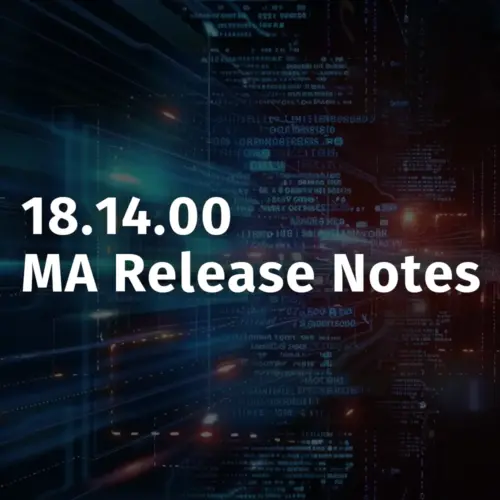For IT service management (ITSM) teams, configuration management databases (CMDBs) are an invaluable resource. These centralized repositories auto-discover all assets across hybrid cloud infrastructures and capture changes and configurations, providing a living record of the network and how it’s changing over time. In addition, advanced CMDBs also automate dependency mapping, enabling ITSM teams to understand how devices support applications and business processes.
ITSM teams can use CMDBs and service methodologies, such as ITIL 4, to continuously improve enterprise service and incident management programs. Almost all (89%) service desks have adopted ITSM and incident management processes. However, more than half (51%) say their incident management processes still need work, such as using service frameworks, digitizing processes, and upskilling teams. A CMDB can provide data and automated processes that help teams diagnose and resolve issues, address root causes, build knowledge resources, and train staff. By doing so, a CMDB can help improve service quality over time.
Blog Highlights
This blog is for ITSM professionals seeking to improve MTTR metrics. It recommends using a CMDB to share data with ITSM platforms, enhance team collaboration, and improve outcomes.
When an incident occurs, something is wrong: a service has failed to perform as expected. This could mean that services are experiencing latency, are unavailable to some or all of users, can’t complete critical processes, or are experiencing outages.
ITSM teams must rapidly diagnose and resolve incidents and meet service level agreements (SLAs). They use standard incident management processes to improve quality and consistency and speed time to resolution.
One major metric that ITSM teams use to determine whether this process is successful is MTTR, which means mean time to repair or mean time to resolution. MTTR is an aggregate number that indicates the average amount of time spent repairing a particular service and preventing the recurrence of that issue. Teams can use MTTR to evaluate their performance over time at a high level. For example, trendlines showing worsening MTTR for a particular service could indicate that root causes of incidents haven’t been fully addressed and warrant further investigation.
Teams typically integrate their ITSM platforms, such as FreshService, Jira, and ServiceNow, with CMDBs. CMDBs pre-populate incident tickets with device and related service information, saving teams from having to do detective work to gather and share relevant information. With data and visualizations, it’s a lot easier to determine what’s going on, evaluate upstream and downstream impacts, and put a plan together for resolving the incident.
Read:
ITIL Change Management: Streamlining Processes to Ensure Successful Change Implementation
Guide to Reducing IT Mean Time to Resolution (MTTR)
How CMDBs Strengthen Incident Management
To execute an incident management process, teams will:
- Log, categorize, prioritize, and assign an incident to the best individual or team to resolve it. Incidents that have a higher severity rating will obviously be prioritized for work ahead of those that impact fewer users and cause minor issues.
- Create and manage all tasks related to resolving incidents.
- Manage SLAs and escalate incidents as appropriate. As part of this process, team members will inform and update stakeholders about incidents: what they are, who’s affected, why they occurred, and potential timeframes for resolution.
- Work to resolve and close incidents and prevent their recurrence.
CMDBs help speed all of these processes by providing an ever-evolving snapshot of the hardware, software, and virtualized devices supporting services and processes, their changes, and configurations. Teams can review this information to drill quickly to insight, spending more of their time on resolution.
ITSM teams that use Device42 as their CMDB say they identify root causes of issues 15% faster and resolve them at least 30% faster, boosting their MTTR scores.
Use CMDBs to Improve MTTR Metrics
So, how can using a CMDB like Device42 boost MTTR scores and improve ITSM processes? CMDBs:
- Enable teams to rapidly identify impacted assets: CMDBs illuminate where performance bottlenecks and outages are occurring and which devices are creating them. With this information, it’s easier to create a work plan for incident resolution.
- Improve team understanding of dependencies: With automated dependency mapping, teams can easily determine which services and business processes are affected, quickly assign a severity level to the incident, and assign it to one or more team members for resolution. Since many devices support revenue-generating services, such as ecommerce websites or customer applications, being able to determine that information at a glance can help teams triage incidents and accelerate their response to minimize business harm.
- Enhance team collaboration: Teams that use ITSM platforms see the same CMDB data, monitor any and all changes that are made to devices during incident resolution, and can easily access analytics and reports. This helps teams work together more quickly and efficiently, as well as share knowledge during incidents and develop best practices after they are resolved.
Drill down:
5 Ways Application Dependency Mapping Can Improve Your IT Operations
How to Improve Incident Management and Minimize Business Risk
How to Improve Your IT Incident Management Processes
Performance, Security, and Incident Response
Benefits of Using CMDBs for Incident Management
The two-thirds (67%) of ITSM teams that use CMDBs are more likely to reap the following benefits than peers that gather asset and dependency data with each incident. These benefits include:
- Improved IT service delivery and customer satisfaction: Using readily available CMDB data, ITIL 4 or other service methodologies, ITSM platforms, and well-honed processes enables ITSM teams to continuously improve incident management processes. This results in greater service uptime, higher performance, and greater customer satisfaction. An ITSM benchmarking survey by Freshservice found that organizations with leading ITSM programs achieved an average customer satisfaction score of 97.4%.
- Reduced downtime and business disruption: Faster incident discovery and resolution lead to greater service uptime and better performance, minimizing harm to employees and customers and business revenues. The same Freshservice survey found that the average resolution time for organizations using the company’s ITSM platform was 25.6 hours and that 95% of incidents were resolved within their SLAs.
- Better visibility and control over the IT environment: All teams working with devices, including IT, security, and ITSM, can use CMDBs to gain the same picture of network assets, their changes, and configurations. By sharing information, teams can improve IT controls. For example, ITSM teams can share the changes and configurations that drive the most incidents, enabling IT professionals to focus site reliability engineering efforts on solving these problems.
- Enhanced reporting and analysis capabilities: CMDBs provide a living inventory of all devices and actions performed on them, which helps inform incident data. ITSM teams can use trend data to understand issues and plan strategies to improve service quality, such as hiring more staff, communicating incident and root cause data to peers, evolving ITSM and change management procedures, and focusing training on high-volume or severe incident causes.
Most high-performing organizations (78%) are likely to have formalized incident-response procedures which define responders, severity levels, processes, and tooling, states Forrester.
How to implement CMDBs for Incident Management
In recent blogs, we provided detailed instructions on how to choose and implement a CMDB; automate CMDB processes; and integrate your CMDB with cloud-native tools, such as ITSM platforms.
Obviously, a CMDB is only as good as its data. That’s why choosing a CMDB that automates processes is so important, as it removes time delay and human error from maintenance and updates. Teams can implement Device42, a next-generation CMDB that auto-discovers all resources using both agentless and agent-based processes and automatically maps dependencies. Device42 also automates data normalization and categorization, so that IT teams can focus on updating and extending configuration items.
Get Started Using CMDBs – and Watch Your MTTR Improve
Deploying a CMDB is a best practice for many ITSM teams, who view its data as essential to orchestrating and improving service and incident management.
Use Device42 to drive faster to insight, focus teams on the right priorities, improve processes, and achieve best-in-class MTTR metrics. By doing so, you’ll strengthen incident management and delight your customers with higher service quality.




